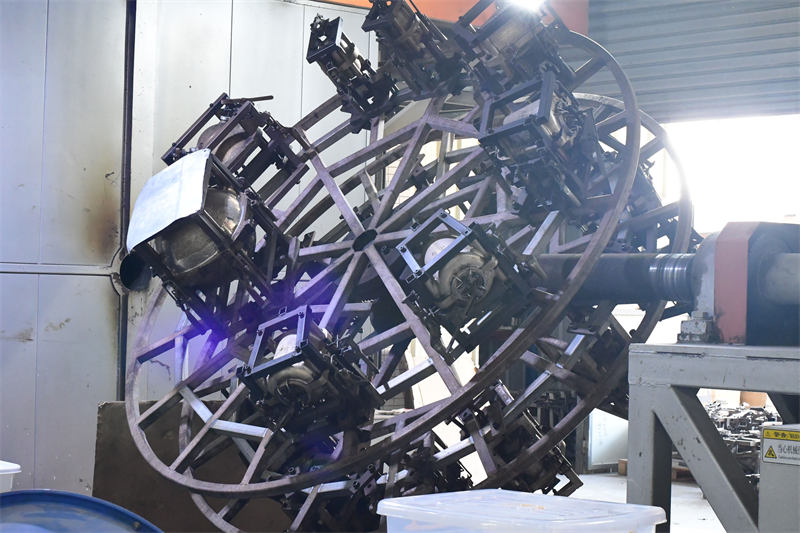Types of Rotational Molding Machines
 Feb 22,2024
Feb 22,2024

Types of Rotational Molding Machines
Rotational molding machines, also known as rotomolding machines, are specialized equipment used in the rotational molding process. These machines come in various types to cater to the diverse needs of rotational molding manufacturers and the wide range of products that can be produced using the rotational molding technique. This article will explore the different types of rotational molding machines and their characteristics.

1. Horizontal Rotational Molding Machines
Horizontal rotational molding machines are the most common type of rotomolding machines. They operate by heating the mold and rotating it horizontally to distribute the melted plastic material evenly across the interior walls of the mold. These machines are versatile and can produce a wide range of products, including plastic toys, storage tanks, and industrial containers. Horizontal rotational molding machines are typically less expensive and easier to maintain compared to other types of machines.
2. Vertical Rotational Molding Machines
Vertical rotational molding machines rotate the mold vertically to distribute the melted plastic material. These machines are often used to produce products with a taller or more vertical shape, such as pipes, columns, and aerospace components. Vertical rotational molding machines can be more energy-efficient than horizontal machines, as they allow for better heat transfer and material flow. However, they may require larger and more complex molds, making them more expensive to purchase and maintain.
3. Dual-Axis Rotational Molding Machines
Dual-axis rotational molding machines can rotate the mold on both horizontal and vertical axes. This allows for greater control over the distribution of melted plastic and the creation of complex product geometries. Dual-axis machines are typically more expensive and require skilled operators, but they offer increased flexibility and the ability to produce high-quality products with intricate designs.
4. Specialized Rotational Molding Machines
In addition to the common horizontal, vertical, and dual-axis machines, there are specialized rotational molding machines designed for specific applications. These include machines with automated loading and unloading systems, robotic arms for intricate part handling, and machines with advanced control systems for precision molding. These specialized machines can increase production efficiency, reduce labor costs, and improve product quality.
5. Semi-Automated and Fully-Automated Rotational Molding Machines
Semi-automated rotational molding machines require some manual intervention during the molding process, while fully-automated machines operate with minimal human involvement. Semi-automated machines are generally less expensive and easier to operate, making them suitable for small-scale or custom production. Fully-automated machines are more expensive but offer higher production speeds, consistent quality, and the ability to handle larger production volumes.
The choice of rotational molding machine depends on factors such as the product design, production volume, and specific manufacturing requirements. Choosing the appropriate type of rotational molding machine can optimize the production process and achieve high-quality plastic rotomolded products
 Tel: 0086-13632687993
Tel: 0086-13632687993  Email: roto@lightvenus.com
Email: roto@lightvenus.com

 Home
Home Key Design Considerations for Rotomolded Products
Key Design Considerations for Rotomolded Products  You May Also Like
You May Also Like



 Tel
Tel
 Email
Email
 Address
Address








